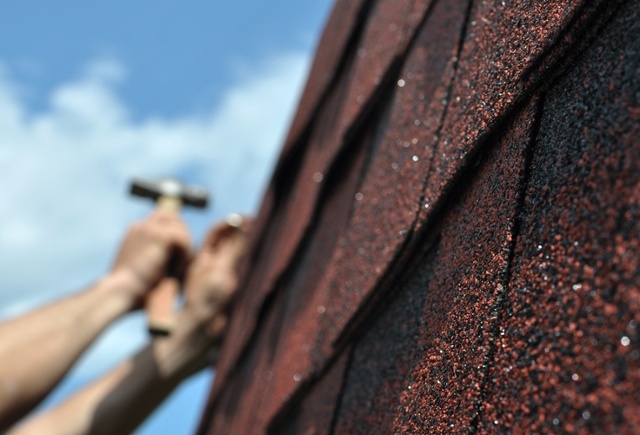Northern winters are world-renowned for being both beautiful to gaze at, but harsh to endure. While pristine, snow-topped houses and glistening icicles hanging off an eavestrough may present a pretty picture, it’s important for homeowners to equally acknowledge that behind this beauty often lies unwanted troubles with their roofs. Here are some steps homeowners may take to care for their roof after a harsh winter.
Inspecting Your Roof
Once winter is over and as soon as your roof is properly visible, the first thing you should do is inspect it. You can either do this from street level using a pair of binoculars, or take a look in person if you have a good, sturdy ladder and are able to do so in a safe manner. You can also call a roofing contractor to carry out the inspection for you.
Are your shingles damaged, splotchy, cracked or curled? Can you see missing shingles or missing pieces of flashing? Does your ceiling have water spots or leaks? Look out for these problems throughout the year, but especially during or after winter. If you run into any of these issues, don’t ignore them, no matter how trivial they may seem at first glance.
Broken or missing shingles and bits of deteriorated flashing can lead to leaking, which might cause more damage to your home, especially when winter comes around again. While you might be able to patch a few shingles or bits of flashing yourself with caulking or roof cement, don’t hesitate to speak with your roofing contractors for a thorough, professional inspection and repair for complex issues.
Addressing Common Winter Problems
- Leaks and Ice Dams
If you’ve noticed water spots on your ceilings, find out what’s causing them, because moisture can lead to rot and mould. Ceilings that are poorly ventilated or insulated create the perfect conditions for excessive condensation, which during the winter will often lead to the formation of ice dams on your roof. Ice dams form when snow melts and refreezes as ice. Any excess moisture will continue to freeze on the ice dam, only to eventually thaw out and cause leaking inside your home. This freeze-thaw-leak cycle can wreak havoc upon your roof, and may become unmanageable over time.
Be sure to insulate and ventilate your attic, as this will prevent ice dam formation, which in turn will mitigate the risks of leaking due to thawed ice and snow. If needed, hire professionals during the winter to remove any ice dams, as this is not something you should endeavour to do yourself. That said, if your leaky roof is more than 20 years old, fixing it is out of the question. Contact your roofing company as soon as possible to have them replace it.
- Heavy Snow and Roof Collapse
With ice dams and leaks comes the potential for roof collapse, particularly if the weight of the snow and ice becomes too much to bear. If you live in an area that experiences regular snowfalls, remove snow from your roof throughout the winter on a regular basis. If possible, use a roof rake to remove snow in small increments, particularly to clear the overhangs. You can also consider contacting a roofing company to shovel the snow off your roof for you, especially if the snow is wet and heavy.
Beyond considering snow removal, watch out for excessive leaking, creaking and sagging ceilings both during and after winter. These are all signs that your roof requires immediate attention from professional roofers, as they are good indicators of potential roof collapse.
- Icicles
While it may be tempting to forget about icicles after winter has passed, or to dismiss them as pretty nothings, this probably isn’t the best idea. If you noticed a lot of icicles around your roof over the winter, take a good look at your shingles and gutters to make sure there isn’t any damage. Icicles are a symptom of air leaks in your roof. Luckily, better insulation will not only help prevent icicle formation, but ice dams too! You can take the time to carefully deal with icicles yourself throughout the winter with the help of a roof rake. That way, nobody gets hit by a falling icicle, and your shingles and gutters won’t suffer as much damage come spring.


